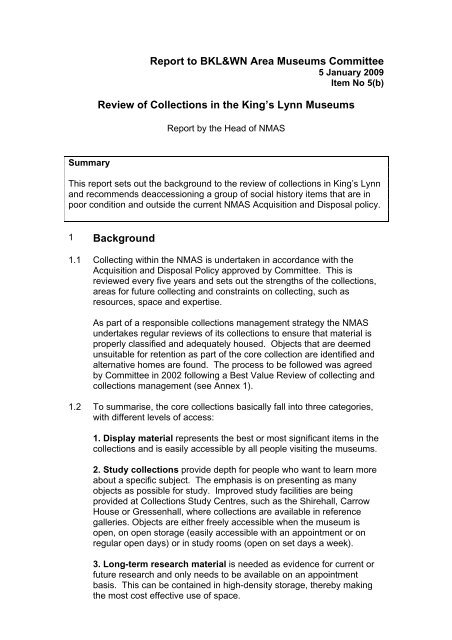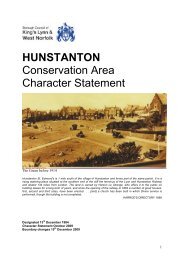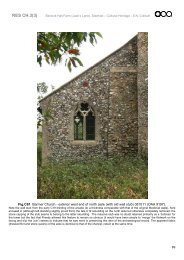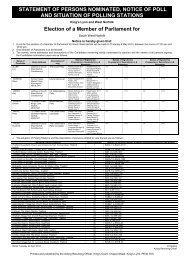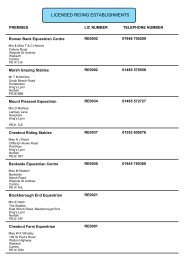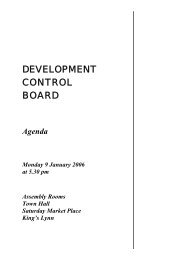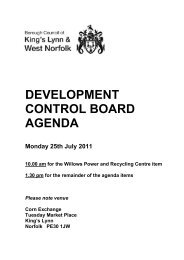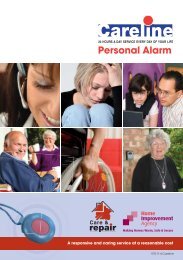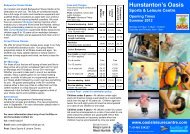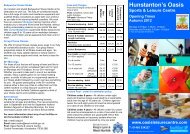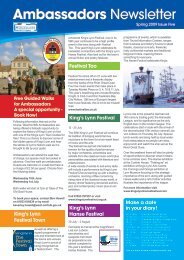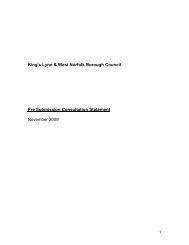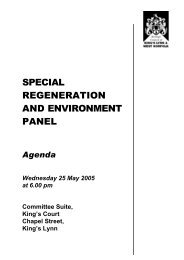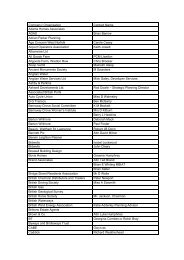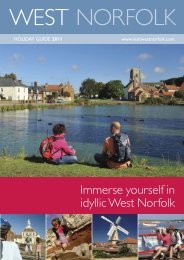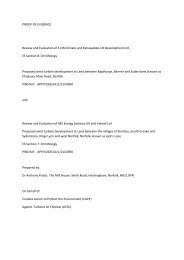KING'S LYNN AND WEST NORFOLK AREA MUSEUMS COMMITTEE
KING'S LYNN AND WEST NORFOLK AREA MUSEUMS COMMITTEE
KING'S LYNN AND WEST NORFOLK AREA MUSEUMS COMMITTEE
You also want an ePaper? Increase the reach of your titles
YUMPU automatically turns print PDFs into web optimized ePapers that Google loves.
Summary<br />
Report to BKL&WN Area Museums Committee<br />
5 January 2009<br />
Item No 5(b)<br />
Review of Collections in the King’s Lynn Museums<br />
Report by the Head of NMAS<br />
This report sets out the background to the review of collections in King’s Lynn<br />
and recommends deaccessioning a group of social history items that are in<br />
poor condition and outside the current NMAS Acquisition and Disposal policy.<br />
1 Background<br />
1.1 Collecting within the NMAS is undertaken in accordance with the<br />
Acquisition and Disposal Policy approved by Committee. This is<br />
reviewed every five years and sets out the strengths of the collections,<br />
areas for future collecting and constraints on collecting, such as<br />
resources, space and expertise.<br />
As part of a responsible collections management strategy the NMAS<br />
undertakes regular reviews of its collections to ensure that material is<br />
properly classified and adequately housed. Objects that are deemed<br />
unsuitable for retention as part of the core collection are identified and<br />
alternative homes are found. The process to be followed was agreed<br />
by Committee in 2002 following a Best Value Review of collecting and<br />
collections management (see Annex 1).<br />
1.2 To summarise, the core collections basically fall into three categories,<br />
with different levels of access:<br />
1. Display material represents the best or most significant items in the<br />
collections and is easily accessible by all people visiting the museums.<br />
2. Study collections provide depth for people who want to learn more<br />
about a specific subject. The emphasis is on presenting as many<br />
objects as possible for study. Improved study facilities are being<br />
provided at Collections Study Centres, such as the Shirehall, Carrow<br />
House or Gressenhall, where collections are available in reference<br />
galleries. Objects are either freely accessible when the museum is<br />
open, on open storage (easily accessible with an appointment or on<br />
regular open days) or in study rooms (open on set days a week).<br />
3. Long-term research material is needed as evidence for current or<br />
future research and only needs to be available on an appointment<br />
basis. This can be contained in high-density storage, thereby making<br />
the most cost effective use of space.


